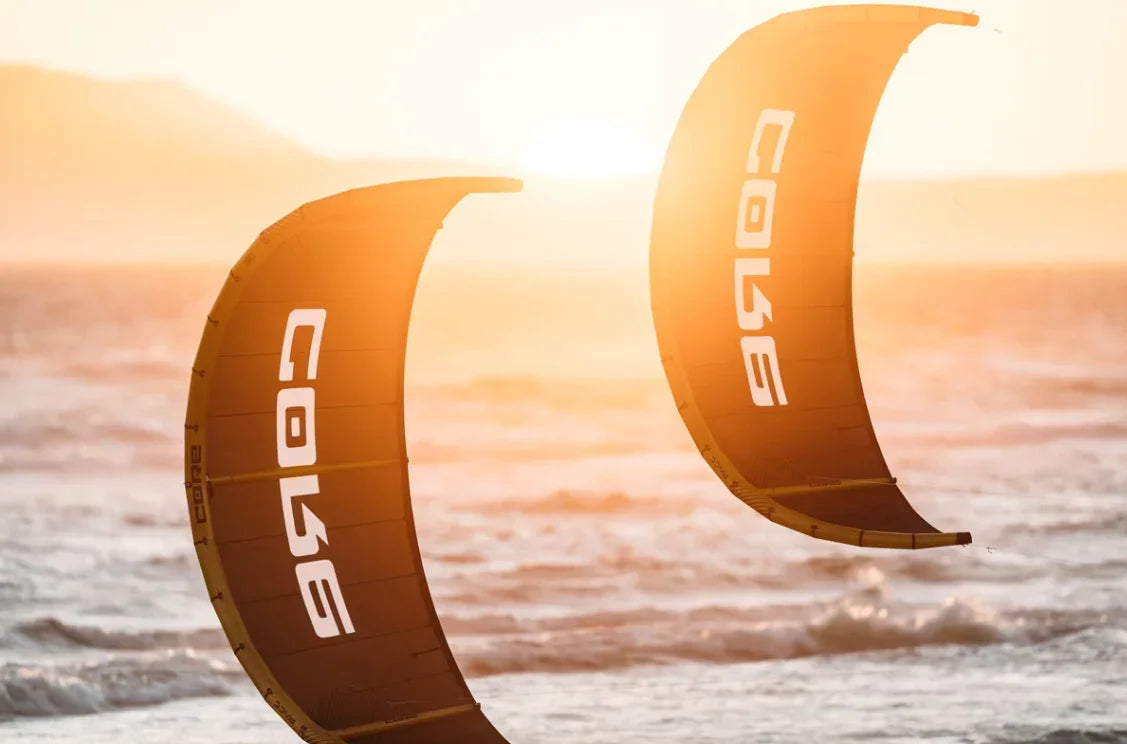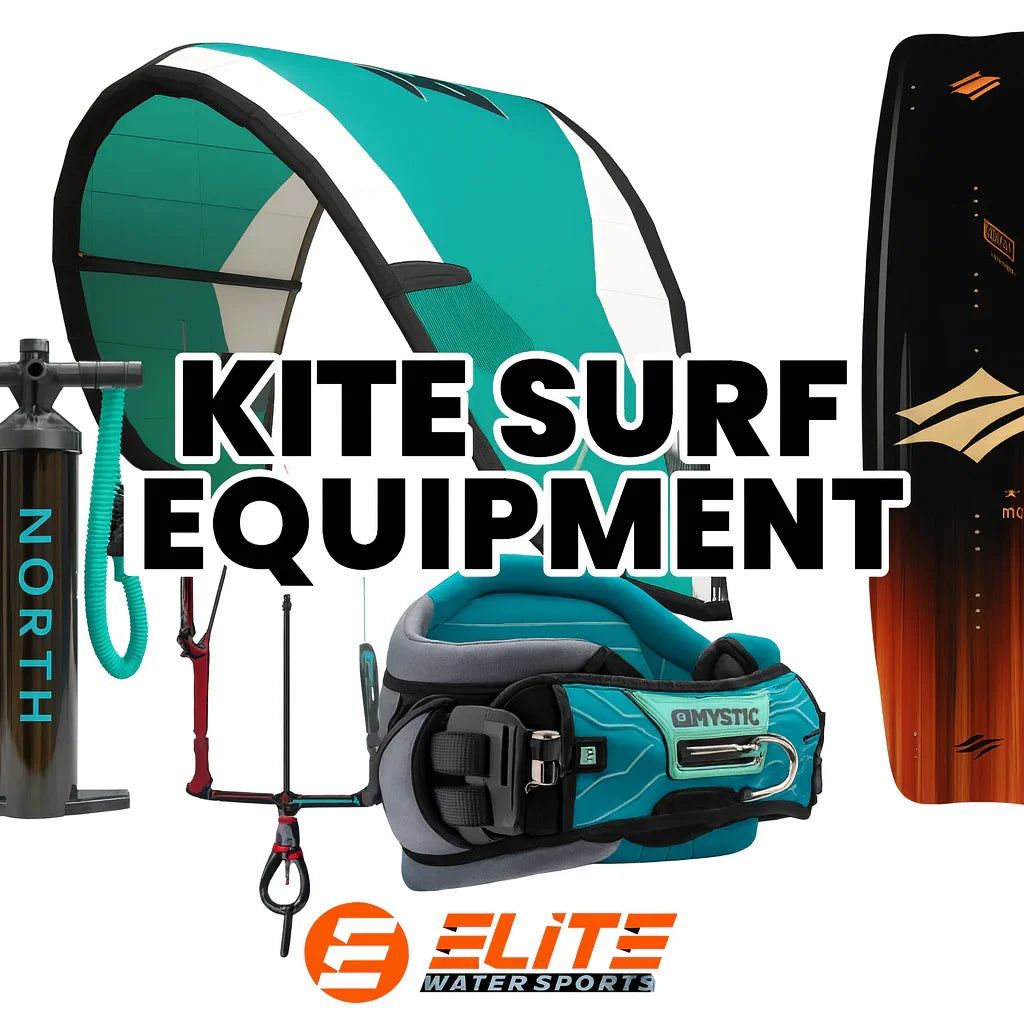ELITE WATERSPORTS
Last updated 12-30 -2024
A Guide to Kiteboarding Downwind
Everything you need to know.

Kiteboarding downwind - How & Why you need to.
Today we’re talking about an essential beginner kiteboarding skill. Riding downwind. Aarons video on going downwind is a must-watch for anyone looking to level up their kiteboarding skills, whether you’re a beginner or pushing into intermediate territory.
Believe it or not, this is an often overlooked step.
Downwind kiteboarding is one of those essential skills that every rider needs to master. We’ll break it down into easy, actionable steps, offering a mix of foundational tips and advanced tricks to get you moving confidently. If you’ve ever struggled with managing line tension, handling transitions, or simply understanding the mechanics of going downwind, this guide is for you.
I'm stoked to write about this one as riding downwind is something I teach all the time. Most kiters want to edge all the time. This will change everything for you.
This skill will improve all facets of your riding. This isn’t just about learning a technique—it’s about gaining the confidence to explore new spots, tackle downwinders with your friends, and take your kiteboarding to the next level. Let’s dive into the key takeaways from Aaron’s video.




Table Of Contents
- Why Going Downwind is Essential for Every Kiteboarder
- Aaron’s Safety Checklist for Downwind Practice
- Line Tension Management: Aaron’s Pro Tips
- Nailing Transitions on a Downwind Ride
- Common Mistakes and How to Fix Them
- Kite Position: The Key to Advanced Downwind Riding
- Why Elite Watersports
Why Going Downwind is Essential for Every Kiteboarder
Going downwind isn’t just a skill—it’s a whole new way of experiencing kiteboarding. Aaron explains that once you master this, you unlock a ton of freedom. It’s about more than just traveling; it’s about understanding how to manage speed, control your kite, and feel the flow of the ride.
For beginners, downwind riding is your first big step toward confidence on the water. For more advanced riders, it’s a chance to refine your transitions, improve your board control, and practice for those epic downwinders with friends. Aaron emphasizes that the skill isn’t just practical—it’s fun. It allows you to break free from the repetitive “mowing the lawn” and opens up a world of exploration.


Aaron mentions that downwinders are one of the most rewarding parts of kiteboarding. Whether you’re riding with buddies or tackling new challenges solo, it’s an experience that adds depth to your connection with the sport.
Safety Checklist for Downwind & Line Tension
We can stress the importance of safety before you even think about going downwind. This checklist is simple but essential:
1. Tack Upwind First: Start your session by heading as far upwind as you can. This gives you a comfortable buffer to practice going downwind without worrying about running out of room.
2. Know Your Exit Points: Always scout the area beforehand. Plan for exit points that are downwind of your starting location. This ensures you have a safe place to finish your session.
3. Deep Water Confidence: Downwinders often take you far from shore, so it’s crucial to feel comfortable retrieving your board and recovering from crashes in deep water. Aaron suggests practicing these skills in controlled conditions first.
He also points out that having local support, like jet skis or a chase boat, can be a game-changer when practicing your first downwinders.

Line Tension Management: Aaron’s Pro Tips
One of the most important aspects of going downwind is line tension management.
This is where a lot of beginners struggle. Us this step-by-step breakdown to make it manageable:
1. Start Strong: Begin with a solid water start, just as if you’re heading upwind. Build enough speed to feel in control.
2. Flatten the Board: Instead of continuing to edge hard, flatten your board and start pointing it slightly downwind. This shift in angle is key to initiating the downwind flow.
3. Slack the Lines: As you adjust, your goal is to experience slack in the kite lines. This is a sign that you’re riding efficiently downwind. If you find yourself struggling to maintain slack, adjust your angle or speed.
4. Regain Speed: If you start to lose momentum, edge away from your kite slightly to pick up speed again.
Aaron explains that this process might feel counterintuitive at first, especially if you’re used to riding upwind. But once you get the hang of managing line tension, it opens up a whole new level of control and confidence.
Nailing Transitions and Common Mistakes
Transitions can be a bit of a hurdle when you’re learning to go downwind, but these tips make it feel achievable:
Kite Position: As you prepare to transition, bring your kite closer to 12 o’clock. This reduces power and gives you more time to adjust.
Slow Down Gradually: Shift your weight to edge gently away from the kite, allowing yourself to lose speed without losing control.
Water Start for the Win: Once you’ve slowed to a stop, execute a water start to head in the new direction.
Aaron also emphasizes the importance of taking your time. Rushing transitions often leads to mistakes, but with practice, you’ll find a rhythm that works for you.

Common Mistakes and How to Fix Them:
These are the most common pitfalls riders face when learning to go downwind—and how to fix them:
Too Much Speed: Beginners often generate too much speed and lose control. Keep your kite higher in the wind window to reduce power and give yourself more room to adjust.
Low Kite Position: A low kite can pull too hard and make it difficult to manage line tension. Keep your kite closer to 12 o’clock until you’re more confident.
Skipping Slack: If you’re not experiencing slack in your lines, you’re likely riding at the wrong angle or edging too hard. Flatten your board and focus on relaxing your edge.
These tips make it easier to troubleshoot as you practice, so you can avoid frustration and keep progressing.
Kite Position: The Key to Advanced Downwind Riding
Kite Position is the key to advanced downwind Riding
Watch the video to get proper advice on kite positioning. It really is a game-changer for anyone looking to refine their technique. We suggest starting with your kite high in the wind window to maintain control, but as you gain confidence, begin experimenting with lower positions.
Bring It Low: Lowering your kite closer to the water can generate more speed and efficiency, much like the technique used by racers.
Play with Tension: Adjust the tension in your lines using subtle bar movements. This allows you to fine-tune your speed and angle for smoother downwind rides.
Practicing these techniques will not only improve your downwind skills but also make your sessions more dynamic and exciting.


Aaron’s video highlights the joy and freedom that come with mastering downwind kiteboarding. By breaking the process into manageable steps, he makes it accessible for riders at any level.
From safety tips to advanced kite positioning, there’s something here for everyone.
So, if you’re ready to take your riding to the next level, start practicing these techniques today.
And don’t forget—if you’re in the area, Elite Watersports is your go-to for lessons, gear, and support. Check out their YouTube channel for even more tips and inspiration!
FAQ: Downwind Kiteboarding.
Do I need to know how to transition to go downwind?
No, transitions aren’t necessary to start practicing. Aaron’s tips help you get started without mastering transitions first. We do recommend learning transitions before you do a real downwinder however. Start going downwind with small downwinders with safe exit points.
What’s the best kite position for going downwind?
Start with the kite high for stability. As you improve, practice lowering it for better speed and efficiency.
How can I build confidence in deep water?
Practice retrieving your board and managing crashes in controlled conditions to build confidence.Be confident with the deepwater self rescue. Watch our video here.
How long does it take to master downwind kiteboarding? With focused practice, you can build strong downwind skills within a few sessions.
Where to take kiteboarding lessons in Florida.
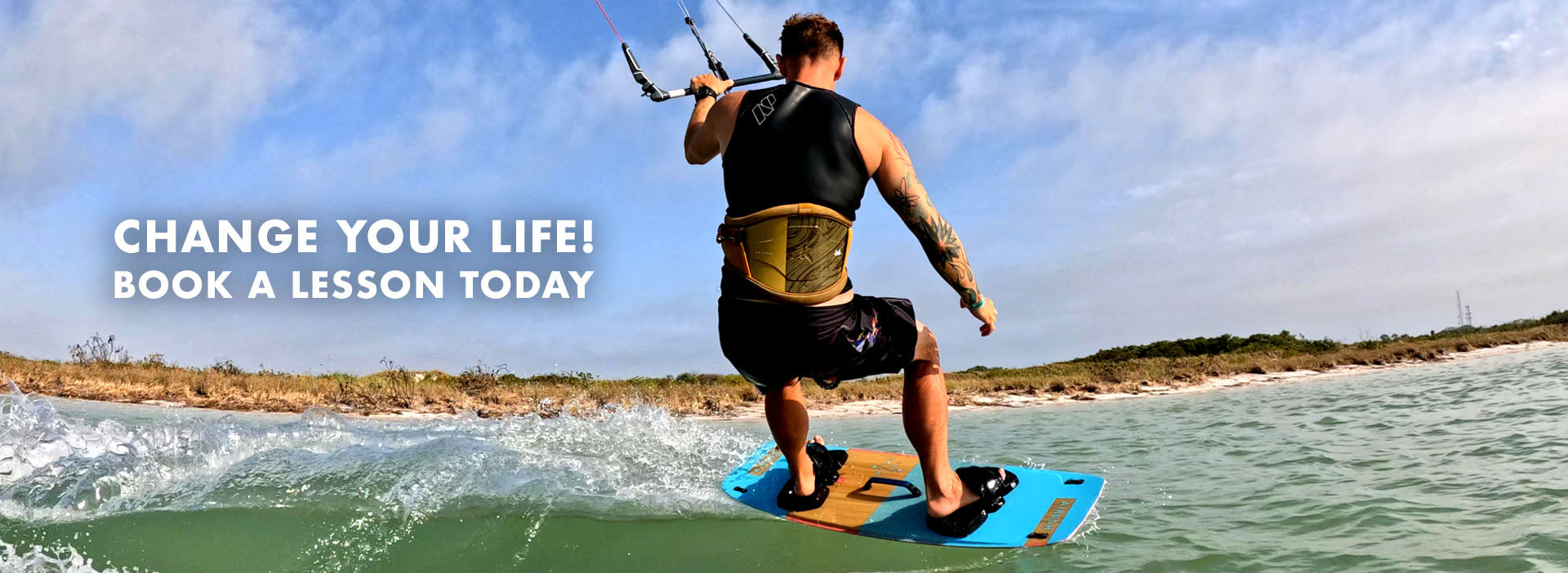 Reserve A Lesson
Reserve A LessonThe nearest kiteboarding shop and kite school that services Dunedin and Clearwater is Elite Watersports located in St Petersburg. Give us a call and we can get you up and riding in no time. We teach kitesurfing lessons at Skyway beach a short drive south of Dunedin. Our condions are also beginner friendly and perfect for learning.
Call us for more info on kiteboarding in Florida.
Elite Watersports has served the Tampa and St Petersburg area for years. They offer kiteboarding and wingsurfing lessons. They also have a retail shop equpit with all of the latest kitesurfing gear.
If you need help give us a call. .
(727)-800-2202
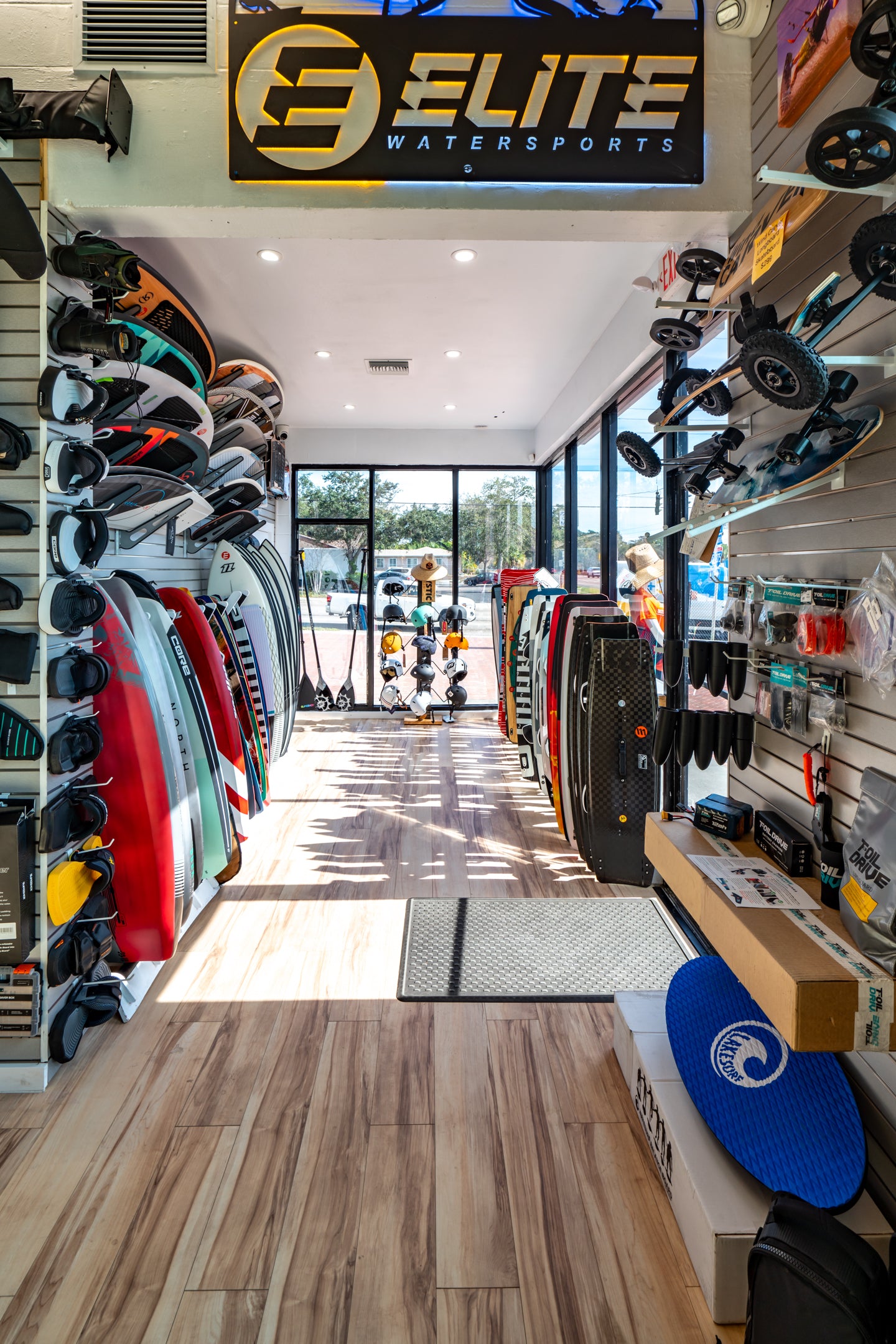
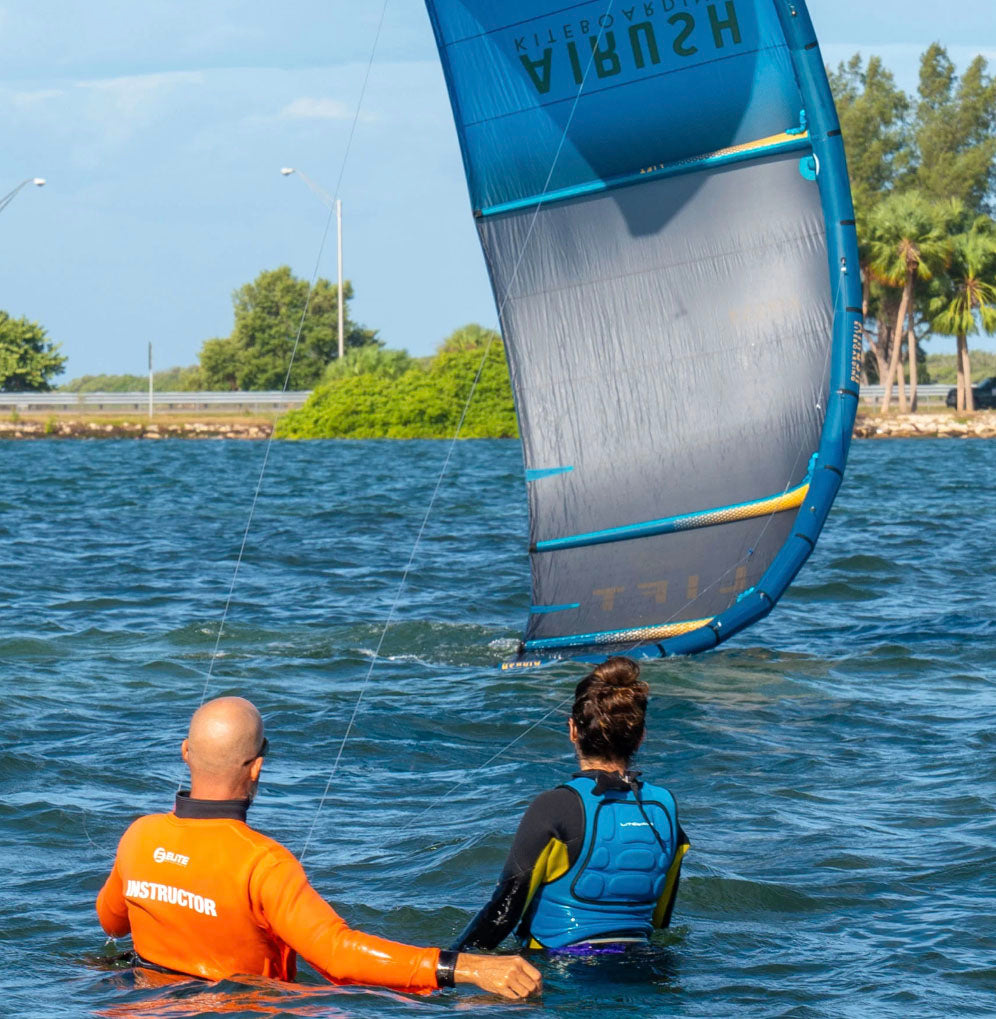
Author

Ryan "Rygo" Goloversic
Rygo is a globally recognized kiteboarder, Airush team rider and an advocate for wakestyle kiteboarding. When he's not writing articles or producing kite videos you can catch him competing on the KPLxGKA world tour or grinding it out in the gym
Tags
Kiteboarding self Rescue
You May Also Like
Want To learn more about kiteboarding?
Follow us to receive the latest update on our journey experience

